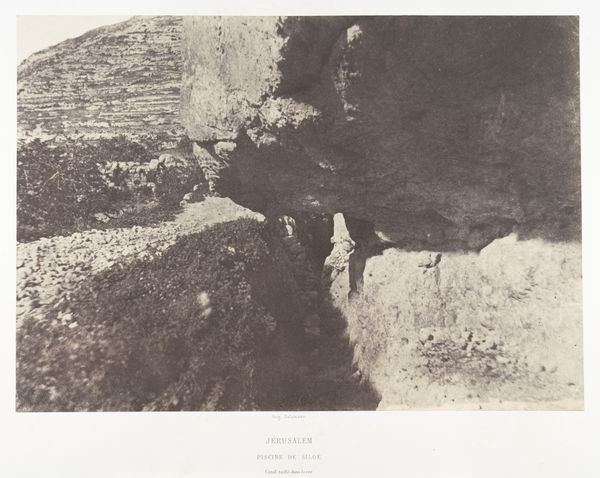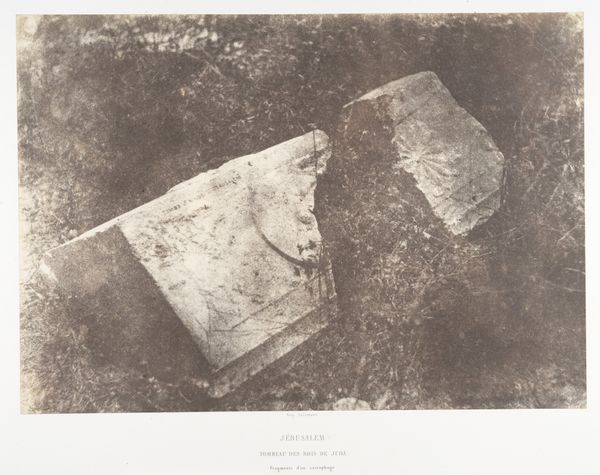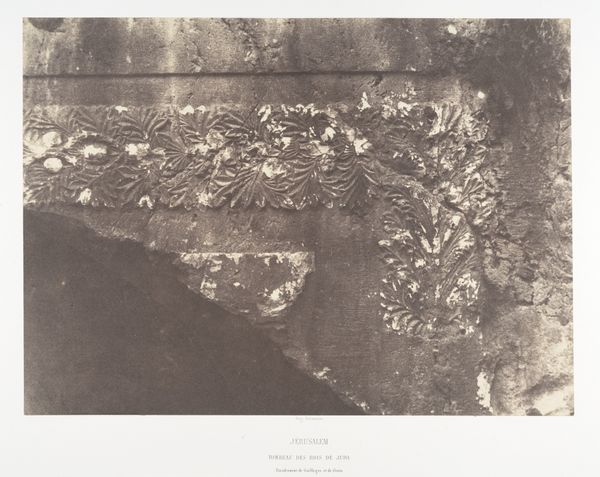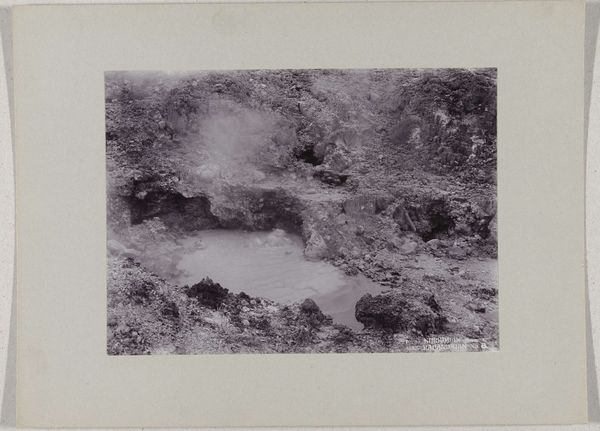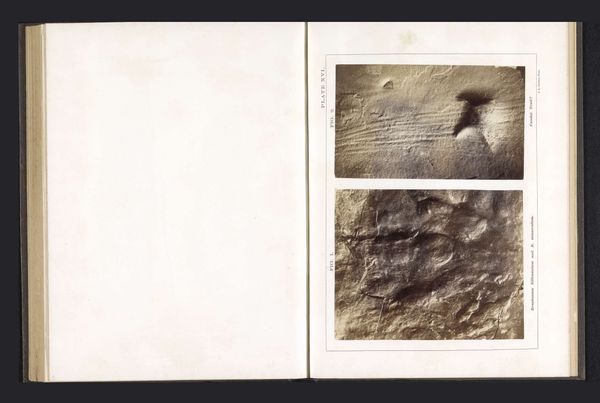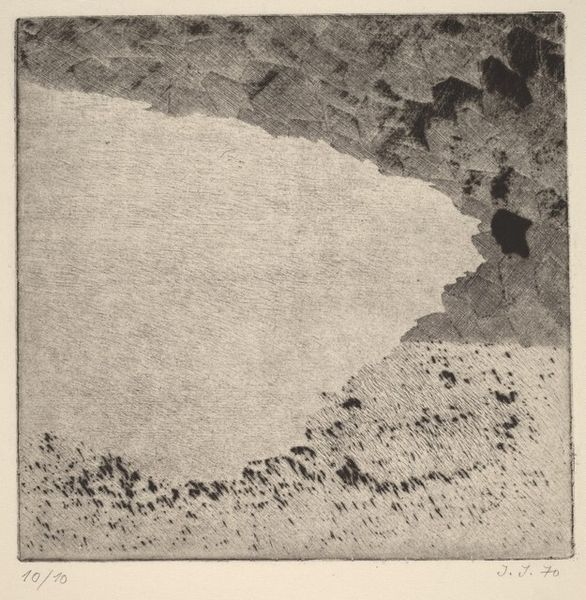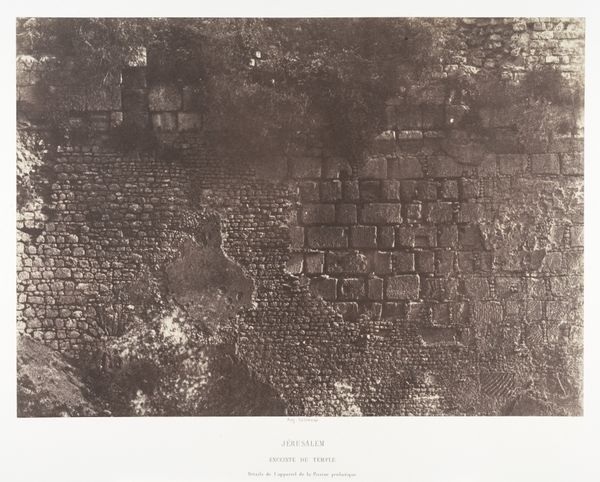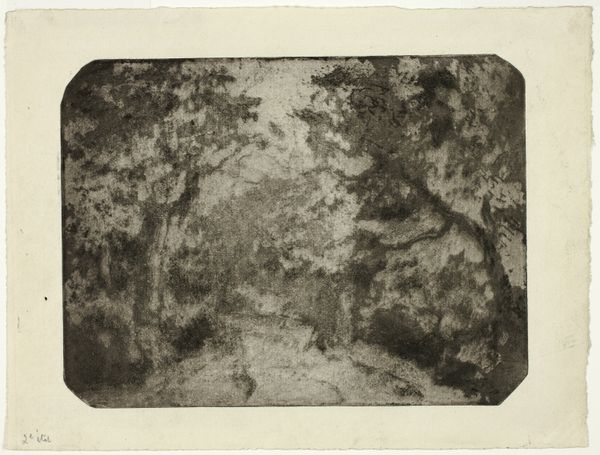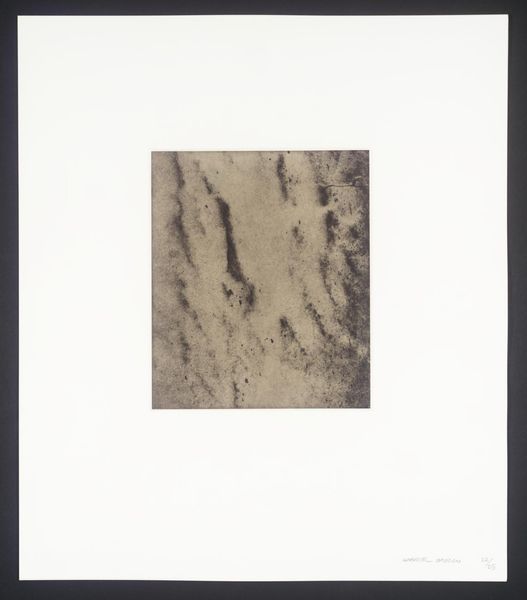
Jérusalem, Vallée de Hinnom, Inscription tumulaire grecque, 2 1854 - 1859
0:00
0:00
daguerreotype, photography
#
landscape
#
daguerreotype
#
photography
#
ancient-mediterranean
Dimensions: Image: 23 x 32.5 cm (9 1/16 x 12 13/16 in.) Mount: 44.5 x 59.8 cm (17 1/2 x 23 9/16 in.)
Copyright: Public Domain
Auguste Salzmann made this photograph of Jerusalem, Valley of Hinnom, and a Greek tomb inscription using the salted paper process, a very early photographic technique. The process involves coating paper with a salt solution, then with silver nitrate, making it sensitive to light. This method yields a soft, slightly grainy image as we can see here, with a delicate tonal range. It gives the stone a very tangible presence, accentuating the rough texture. Considered in its time to be at the cutting edge, it’s important to remember that photography emerged in the 19th century as both an artistic and industrial practice. The production of photographic prints involved chemical processes, specialized equipment, and skilled labor. Photographers operated within a market economy, producing images for sale and distribution, not unlike what we see today. This photograph then is not just an aesthetic object; it reflects the social and economic conditions of its making. Recognizing this helps us appreciate how all art is deeply embedded in the world of materials, labor, and exchange.
Comments
No comments
Be the first to comment and join the conversation on the ultimate creative platform.
